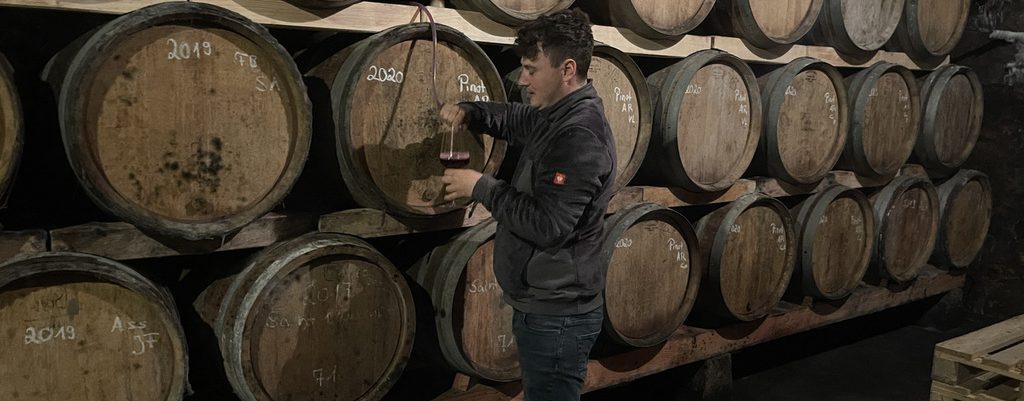



The young Carsten Saalwächter, the current generation at this almost
200-year-old estate, perfectly embodies the renaissance we are seeing in
German wine today; a generation that is inspired by both the past and the
present, the local and the foreign and fusing those two cultures of savoir
faire. In Carsten’s case it is about honoring the old local tradition of
growing Silvaner and Burgundian varieties with great inspiration and old
know-how from the region of Burgundy.
The estate is situated in Ingelheim, a town in the north of Rheinhessen on
the south banks of the Rhein. This is, for now, a less famous part of the
region even though the history is deeply rooted.
For instance, Charlemagne had a royal palace built here during his reign.Assumably it was from here that he glanced across the river, contemplated the best place to plant vines based on where the snow melted first. It was surely not melting first in Ingelheim.
He is cultivating 8 hectares of Silvaner, Chardonnay, Weißer, Grauer- and
Spätburgunder. The history of the first mentioned is especially long and
you can sense that it also is Carsten’s greatest passion. Some are old
belongings of the family, some others new parcels of his own
(read historic and prestigious Höllenberg!). The white vines and half of
his red thrive around his hometown in barren, calcareous vineyards
spared from land consolidation and are therefore rich in old vines,
plenty of French clones.
On the other side of the Rhein, in Assmanshausen, Rheingau, the soil is based on slate, rendering a different style than its sibling from limestone. Carsten is still an annoyingly young and secure talent, 2017 being the year of his first vintage. He knows exactly what his terroirs are capable of and how to best bring that forward; remarkable wines can only lead to greatness if it falls on fertile ground.
Old Burgundian savoir faire is a big influence; a rough handling at juice
stage followed by a delicate nursing once fermentation kicks in.
In the winery this is for the whites characterized by long and hard
pressings, liberal oxygenation of the juice, slow fermentations with a high portion of sediment and a long élevage of 12-18 months. The reds are whole bunch fermented, maceration is very careful, more like gentle infusion, gentle pressing and again, élevage is key, up towards 24 months. They wine, both white and red, combine something like finesse, texture and breadth of old-school Burgundy and with the cut and structure of a more cool-climate Germany.
There’s zero doubt he possesses the right personal attitude and titanic
touch for how great wines are made; his passion is bordering on
obsession. Follow the journey closely – these wines could very well be
some of the triple crème coming out of Germany this decade.